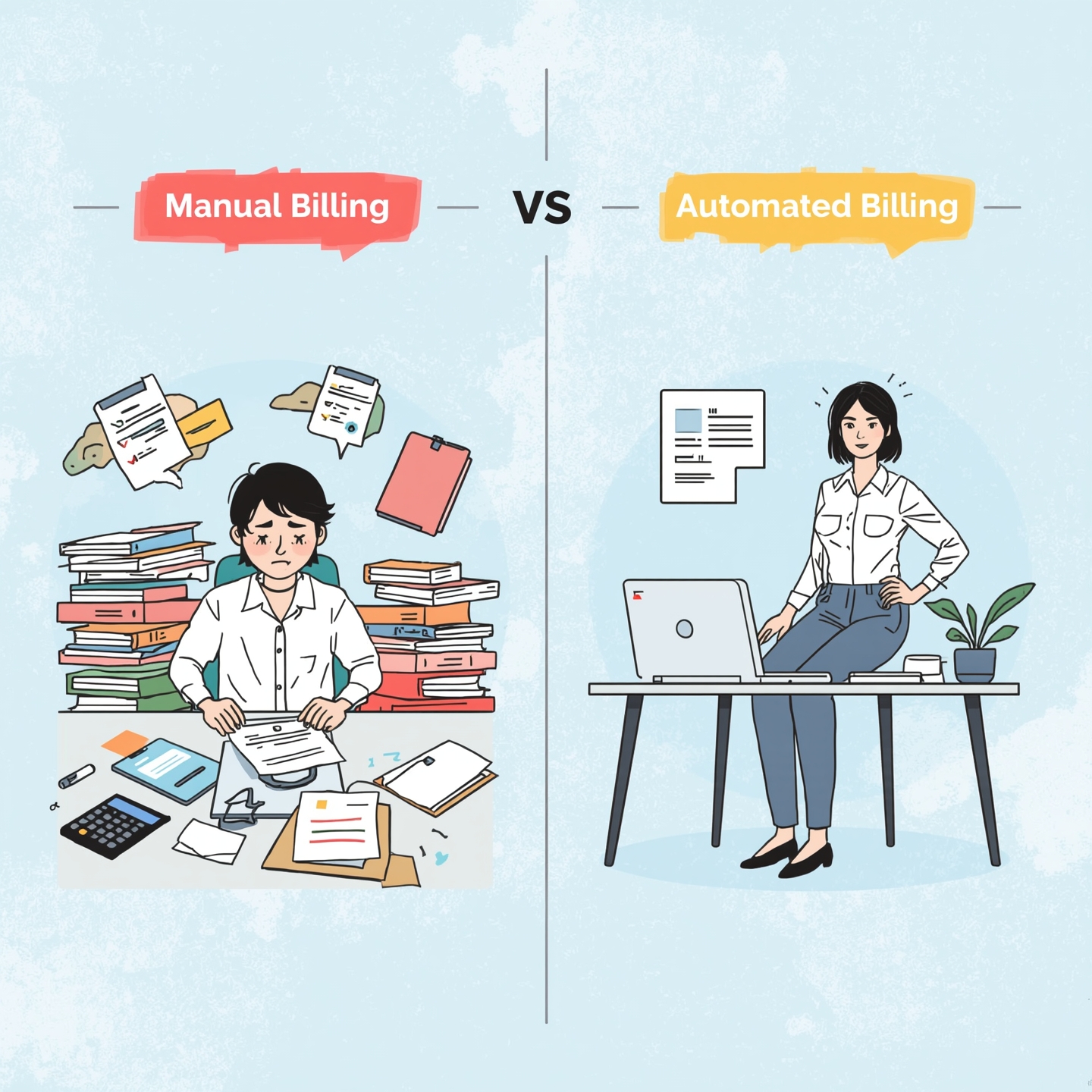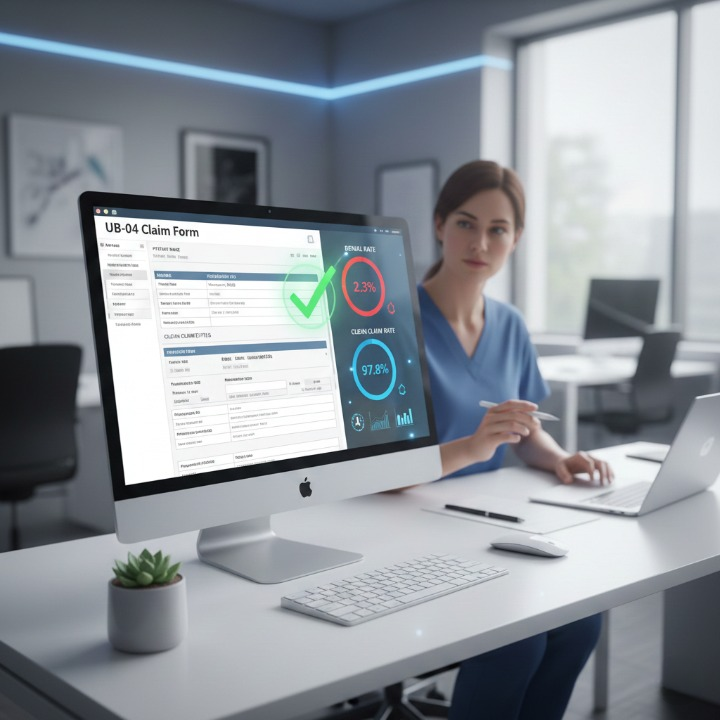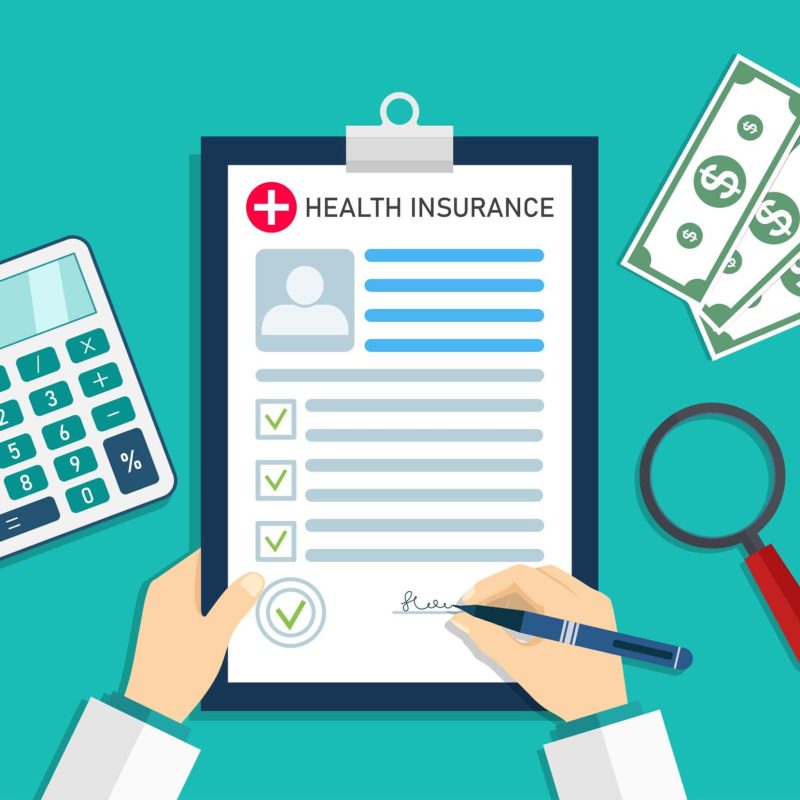Medical billing automation 2025 has evolved far beyond basic claim submission and payment collection. Healthcare providers now navigate complex regulatory requirements, multiple insurance networks, and increasingly demanding patient expectations—all while managing tighter margins and growing administrative burdens. Manual billing processes that once sufficed are now creating bottlenecks that threaten financial stability and operational efficiency.
The numbers tell a compelling story: 60% of medical billing errors stem from manual processes, while automated systems can reduce claim denial rates by up to 25%. With the medical billing automation market projected to reach $12.9 billion by 2025, early adopters are already reaping significant benefits. Healthcare providers who delay automation risk falling behind competitors who have streamlined their operations and improved their bottom lines.
The window for a comfortable transition to automated billing systems is narrowing. As regulatory requirements tighten and patient volumes increase, practices that haven’t modernized their billing operations by 2026 may find themselves struggling to keep pace with industry standards and financial pressures. As the demand for medical billing automation in 2025 grows, practices that modernize early will gain a strategic edge
Want to learn more? Check out our How to Improve Medical Billing Workflow Efficiency.
Want to help with medical billing? Book Your Consultation Today.
Current Challenges in Manual Medical Billing
Traditional billing workflows create numerous pain points that directly impact practice profitability and efficiency. These challenges compound over time, making it increasingly difficult for healthcare providers to maintain sustainable operations.
High Error Rates and Administrative Burden
Manual data entry remains one of the most significant sources of billing errors in healthcare practices. Staff members handling patient information, insurance details, and coding requirements face constant pressure to process claims quickly while maintaining accuracy. This dual demand often results in mistakes that lead to claim denials, delayed payments, and additional administrative work.
The administrative burden extends beyond simple data entry. Billing staff must verify patient eligibility, obtain prior authorizations, follow up on denied claims, and manage payment posting. Each of these tasks requires time and attention that could be directed toward patient care or practice growth initiatives.
Research from OS Healthcare demonstrates that practices implementing comprehensive billing solutions see measurable improvements in cash flow and denial reduction within 60 days. Their focus on preventing denials rather than simply managing them represents the shift toward proactive billing strategies that automation enables.
Time-Consuming Processes
Manual billing processes consume enormous amounts of staff time. From initial patient registration through final payment collection, each step requires human intervention and oversight. Claims processing that should take minutes can stretch into hours when handled manually.
Eligibility verification alone can consume 15-30 minutes per patient when performed manually. Prior authorization requests may require multiple phone calls, form submissions, and follow-up communications. These time investments add up quickly, creating staffing bottlenecks that limit practice capacity and growth potential.
Difficulty in Managing Denials
Denials management becomes exponentially more complex in manual systems. When claims are denied, staff must identify the reason, gather necessary documentation, make corrections, and resubmit—all while tracking deadlines and appeal requirements. This process often requires specialized knowledge of insurance policies and coding requirements that not all billing staff possess.
The challenge intensifies when practices handle multiple insurance plans with varying requirements and submission processes. Manual tracking of denial patterns, appeal deadlines, and resubmission requirements creates opportunities for missed revenue and increased write-offs.
Key Benefits of Medical Billing Automation 2025
Automation transforms medical billing from a reactive, error-prone process into a proactive revenue optimization system. The advantages extend far beyond simple efficiency gains, creating sustainable improvements in practice operations and financial performance.
Improved Accuracy and Reduced Errors
Automated billing systems eliminate many sources of human error through standardized data entry, automated coding suggestions, and real-time validation checks. Claims are reviewed for completeness and accuracy before submission, reducing the likelihood of denials due to missing information or coding errors.
Practices implementing automation typically see error rates drop by 40% or more within the first year. This improvement translates directly into reduced denial rates, faster payment cycles, and decreased administrative overhead. The compounding effect of improved accuracy creates lasting benefits for practice cash flow and staff productivity.
Increased Efficiency and Faster Payment Cycles
Automation accelerates every aspect of the billing process. Claims can be generated, reviewed, and submitted within hours of patient encounters rather than days or weeks. Real-time eligibility verification prevents coverage issues before services are rendered, while automated prior authorization workflows ensure necessary approvals are obtained promptly.
Payment cycles improve dramatically when claims are submitted accurately and quickly. Automated systems can improve payment cycles by an average of 30%, providing practices with more predictable cash flow and reduced accounts receivable.
Reduced Administrative Costs
While automation requires initial investment, it delivers substantial cost savings through reduced labour requirements and improved efficiency. Practices can save up to 40% on billing costs with automation, according to industry research. These savings result from decreased need for manual data entry, reduced error correction work, and streamlined follow-up processes.
Administrative cost reduction doesn’t necessarily mean staff reductions. Many practices redirect billing staff toward more strategic activities such as patient engagement, denial prevention, and revenue cycle optimization.
Better Management of Denials
Automated denials management systems track denial reasons, identify patterns, and prioritize appeals based on likelihood of success and financial impact. This systematic approach ensures that valuable claims aren’t overlooked due to time constraints or staff oversight.
Advanced systems can predict denial risks before claims are submitted, allowing practices to address issues proactively. Companies like Voyant Health specialize in data-driven solutions that help practices identify and resolve billing challenges before they impact cash flow.
Key Features to Look For in Billing Automation Software
Selecting the right automation platform requires careful consideration of features that address specific practice needs and challenges. The most effective systems integrate seamlessly with existing workflows while providing comprehensive functionality across the entire revenue cycle. Choosing the right platform for medical billing automation 2025 requires understanding your practice’s needs and growth goals.
Automated Claims Processing
Comprehensive claims processing automation handles everything from initial claim generation through final payment posting. Look for systems that integrate with your practice management software and electronic health records to pull patient and service information automatically.
Effective automated claims processing includes real-time validation checks, automated coding assistance, and intelligent routing to appropriate payers. The system should handle electronic and paper claims equally well, with automatic retry logic for failed submissions.
Real-time Eligibility Verification
Patient eligibility verification should occur automatically when appointments are scheduled or patients check in. Real-time verification prevents surprises at the time of service and allows staff to address coverage issues proactively.
Advanced verification systems check not only basic coverage but also benefit limits, copayment requirements, and prior authorization needs. This comprehensive approach prevents claim denials and improves patient satisfaction by providing accurate cost estimates upfront.
Denial Management Tools
Sophisticated denial management goes beyond simple tracking to provide actionable insights and automated responses. Look for systems that categorize denials by type, track trends over time, and prioritize appeals based on financial impact and success probability.
The best denial management tools include automated appeal generation, deadline tracking, and integration with payer websites for electronic appeals submission. Some systems even provide predictive analytics to identify claims at risk of denial before submission.
Reporting and Analytics Capabilities
Comprehensive reporting transforms billing data into actionable insights. Essential reports include accounts receivable ageing, denial analysis, staff productivity metrics, and payer performance comparisons. Advanced analytics can identify trends and opportunities that manual analysis might miss.
Look for customizable dashboards that provide real-time visibility into key performance indicators. The ability to drill down from summary data to individual transactions helps identify specific issues and opportunities for improvement.
Platforms like Querio demonstrate the power of AI-driven analytics in healthcare operations, making complex data accessible to non-technical staff members while providing sophisticated analysis capabilities.
Examples and Case Studies
Real-world implementations demonstrate the transformative potential of medical billing automation across different practice sizes and specialties. These examples provide concrete evidence of the benefits and return on investment that practices can expect.
Large Hospital Network Success
A major hospital network implemented comprehensive billing automation and achieved remarkable results within 18 months. The system reduced billing errors by 40% while accelerating payment cycles by 30%. The combination of improved accuracy and faster processing created a significant positive impact on cash flow and operational efficiency.
The hospital network’s success stemmed from choosing a platform that integrated seamlessly with existing EHR systems while providing robust reporting and analytics capabilities. Staff training and change management played crucial roles in achieving optimal results from the new system.
Small Clinic Transformation
A small primary care clinic saved £20,000 annually by automating claim submissions and reducing administrative overhead. The practice was able to reassign billing staff to patient-facing roles, improving both operational efficiency and patient satisfaction.
The clinic’s automation implementation focused on high-impact areas such as eligibility verification, claims submission, and denial management. By addressing these core functions, the practice achieved substantial cost savings while improving revenue cycle performance. The ROI from medical billing automation 2025 is measurable—most practices report reduced denials and faster payments.
Vendor Spotlight: Comprehensive Solutions
Leading automation vendors like Athenahealth and Change Healthcare provide comprehensive platforms that address multiple aspects of the revenue cycle. These solutions combine billing automation with practice management capabilities, creating integrated workflows that maximize efficiency gains.
Athenahealth offers cloud-based solutions that automatically update with regulatory changes and payer requirements. Their platform includes built-in analytics and benchmarking tools that help practices identify improvement opportunities.
Change Healthcare provides extensive network connectivity and data analytics capabilities that enhance claim processing efficiency. Their solutions integrate with multiple EHR platforms and provide real-time visibility into claim status and payment processing.
Companies like CPa Medical Billing demonstrate how specialized billing services can provide automation benefits to practices that prefer outsourced solutions. Their clients average 45% revenue gains after implementing automated billing processes. Don’t wait until Q1 2026 to invest in medical billing automation 2025 strategies.
Financial Metrics and ROI
Practices implementing automation report consistent improvements in key financial metrics. Denial rates typically decrease by 15-25%, while collection rates improve by 10-20%. These improvements translate directly into increased revenue and improved cash flow.
Return on investment for billing automation typically occurs within 12-18 months. The combination of reduced costs, improved collections, and faster payment cycles creates a compelling financial case for automation adoption.
Specialized healthcare technology companies like Alpaca Health show how AI-powered automation can reduce administrative time by 50% while improving accuracy and compliance. Their guaranteed two-week payouts demonstrate the cash flow improvements that effective automation can deliver.
Trends in Medical Billing Automation 2025
The evolution of medical billing automation continues to accelerate, driven by advances in artificial intelligence, machine learning, and robotic process automation. Understanding these trends helps practices prepare for the next generation of billing technology and ensure their chosen solutions remain relevant and effective. Vendors specializing in medical billing automation 2025 are helping practices optimize the full revenue cycle
Increased Use of AI and Machine Learning
Artificial intelligence is transforming medical billing from a reactive process to a predictive system. AI algorithms analyze historical claim data to identify patterns that indicate denial risk, allowing practices to address issues before claims are submitted. Machine learning models continuously improve their accuracy as they process more data, creating increasingly sophisticated billing systems.
AI-powered coding assistance helps ensure claims are coded accurately based on documentation and service details. Natural language processing analyses clinical notes to suggest appropriate codes, reducing the burden on coding staff while improving accuracy. These systems learn from corrections and feedback, becoming more accurate over time.
Predictive analytics powered by machine learning helps practices forecast cash flow, identify seasonal trends, and optimize staffing levels. This capability enables more strategic decision-making and better financial planning.
Integration of Robotic Process Automation (RPA)
Robotic process automation handles repetitive tasks that don’t require human judgment but consume significant staff time. RPA can automatically check claim status, post payments, and update patient accounts without human intervention. This technology is particularly valuable for high-volume practices that process hundreds of claims daily.
RPA integration extends beyond basic automation to include complex workflows such as prior authorization management and appeals processing. Bots can navigate payer websites, submit required documentation, and track approval status automatically.
The combination of RPA with traditional billing automation creates comprehensive systems that handle routine tasks while escalating exceptions to human staff members. This hybrid approach maximizes efficiency while maintaining appropriate oversight and quality control.
Enhanced Data Analytics for Predictive Billing
Advanced analytics platforms provide predictive insights that help practices optimize their revenue cycles proactively. These systems analyze claim patterns, payer behaviour, and regulatory changes to identify trends and opportunities before they become apparent through traditional reporting.
Predictive billing analytics can forecast seasonal volume changes, identify high-risk claims, and recommend optimal timing for claim submissions. This intelligence enables practices to make strategic decisions about staffing, technology investments, and payer contract negotiations.
Integration with external data sources such as regulatory databases and payer policy updates ensures that predictive models remain accurate and relevant. Real-time updates help practices adapt quickly to changing requirements and opportunities.
The Urgency of Acting Before 2026
The healthcare landscape is evolving rapidly, creating both opportunities and challenges for practices that haven’t yet automated their billing operations. Several factors make 2026 a critical deadline for implementation.
Regulatory Compliance Requirements
Healthcare regulations continue to evolve, with new requirements for data security, reporting accuracy, and audit trails. Manual billing systems struggle to maintain compliance with these expanding requirements, creating legal and financial risks for practices.
Automated systems can implement compliance measures systematically, ensuring consistent adherence to regulatory requirements. Built-in audit trails, data encryption, and access controls provide the foundation for regulatory compliance that manual systems cannot match.
Competitive Pressures
Practices that have implemented automation are operating more efficiently and profitably than those relying on manual processes. This competitive advantage compounds over time, making it increasingly difficult for manual practices to compete on price while maintaining quality standards.
Patient expectations for transparent billing and quick resolution of insurance issues favour practices with automated systems. The ability to provide real-time eligibility verification and accurate cost estimates becomes a competitive differentiator in patient acquisition and retention.
Technology Infrastructure Evolution
Healthcare technology continues to evolve toward integrated platforms that require automated data exchange. Practices using manual billing processes may find it increasingly difficult to integrate with new EHR systems, telehealth platforms, and patient engagement tools.
The trend toward value-based care and bundled payments requires sophisticated data analytics and reporting capabilities that manual systems cannot provide. Practices without these capabilities may be excluded from advantageous payer contracts
Medical billing automation refers to using technology and software to streamline the billing process, reduce manual work, and improve claim accuracy.
In 2025, medical billing automation helps healthcare providers avoid claim errors, reduce processing time, and increase revenue by minimizing denials.
Automation tools catch missing codes, flag inconsistencies, and auto-fill patient data—leading to fewer rejections and improved medical billing workflow.
Yes, even small clinics can benefit from billing automation in 2025 by saving time, lowering staffing costs, and improving payment turnaround.
Key areas to automate include patient eligibility checks, claims submission, denial management, payment posting, and reporting.










